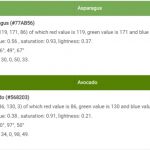CDFS stands for Compact Disc File System which has been around since 1987 when the first CDs were introduced. It was created by Sony as a way to store data on CDs without any loss in quality. This system had finally found its place after several other systems flopped due to high costs or incompatibility with different operating systems (along with many other factors). Since that time, there have only been two revisions made which increased speeds from 150KB/s up to 700MB/s while maintaining compatibility for all devices currently out in the market. In addition, this file system works well with PCs but also Mac computers because it supports both FAT32 and HFS.
Some devices, like MacBooks and Linux computers have the ability to read CDs but not write them. This has opened up an opportunity for CD writers to provide another service with their device so they can create digital copies of any audio or video files on discs that people would want in MP format (or whatever other formats are supported).
Another significant feature about this type of file system is that it also allows users to erase data from their CDs which means there’s no need for anyone who owns one to worry if someone else will be able to access personal content stored on it because only the user knows how to unlock those files again after erasing everything off the disc.
Advantages of a Compact Disc File System
- Easier to manage.
- Better for space management.
- Reduces the risk of data corruption and loss.
- Faster file access time than with other storage media, such as hard disks or flash drives.
- Allows for expansion and flexibility of capacity by adding more CD-ROMs as needed.
- Allows users to erase data on the CDs.
- More durable than magnetic media like floppy disks or tapes because it does not contain any moving parts that can break down over time, which means less maintenance is required in the long run.





